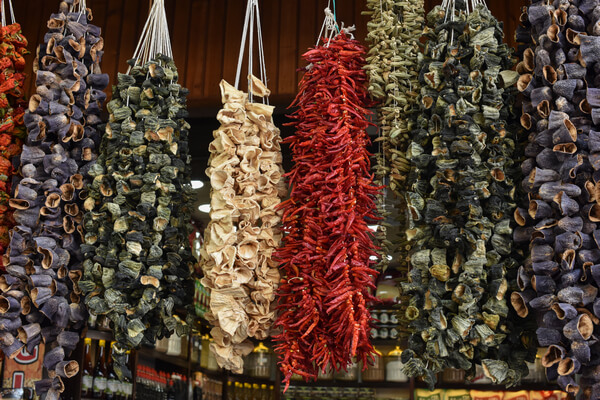The timeless tradition of Hokh Syun, a unique culinary practice in Kashmir, permeates the kitchens of rural and urban homes, infusing the air with the aromatic essence of winter dishes crafted from sun-dried fruits and vegetables harvested during the summer. Hokh Syun involves soaking carefully preserved sun-dried produce in hot water until they swell, then sautéing them in oil and spices. The result is a symphony of flavours that embody the essence of winter comfort for the people of Kashmir amid the harshest winter period in Kashmir, called Chillai-Kalan.
For Kashmiri farmers, Hokh Syun is not just a tradition but a boon. These farmers sun-dry surplus vegetables from their gardens, consuming some and selling the rest during winter. The economic benefit of selling Hokh Syun outweighs selling fresh produce in the summer when prices are lower due to abundant supply.
Hokh Syun remains an integral part of Kashmiri kitchens. This tradition, born out of necessity in the face of harsh winters, continues to be a cultural touchstone. Despite modern supply chains and year-round availability of fresh produce, the unique taste of Hokh Syun holds its sway. The demand for Hokh Syun is not confined to local markets; Kashmiris living abroad carry these sun-dried delicacies with them.
Vendors quote that there is a continuous demand, with sales reaching new heights with each passing year. Highlighting those sun-dried vegetables have been a cherished tradition among Kashmiris for centuries. The consumption of Hokh Syunn during winters is an age-old practice, with the demand surging from late December to February. These dried vegetables are renowned for providing warmth in winter. While people traditionally grew them at home, nowadays vendors in Srinagar and other towns also offer these.
In the northern regions of Kashmir, including Bandipora, Baramulla, and Kupwara, the age-old tradition of consuming locally produced sun-dried vegetables like brinjals, gourd, turnips, spinach, and tomatoes during winters has been deeply ingrained in the culture for centuries. Even in places like Kargil, Leh, and Jammu, there is a notable demand for sun-dried vegetables, showcasing the widespread popularity of this Kashmiri tradition.
In addition to fresh vegetables, many people, particularly during the bone-chilling winter, prefer consuming dried varieties such as Ruwangan Hache (Dried Tomatoes), Al-Hache (Bottle Gourd), Nader Hache (Lotus stems), Hokh Gaad (Dried Fishes), Wangan Hache (Brinjal), and Gogji Hatche (Turnip).
According to the health experts, eating sun-dried vegetables once or twice a week during winters is generally safe; however it’s important not to make it a daily habit. They advise being careful about how the vegetables are dried and stored. One should be cautious when there is fungus on sun-dried veggies as the fungus may contain harmful toxins that could lead to health problems, including an increased risk of cancer.






